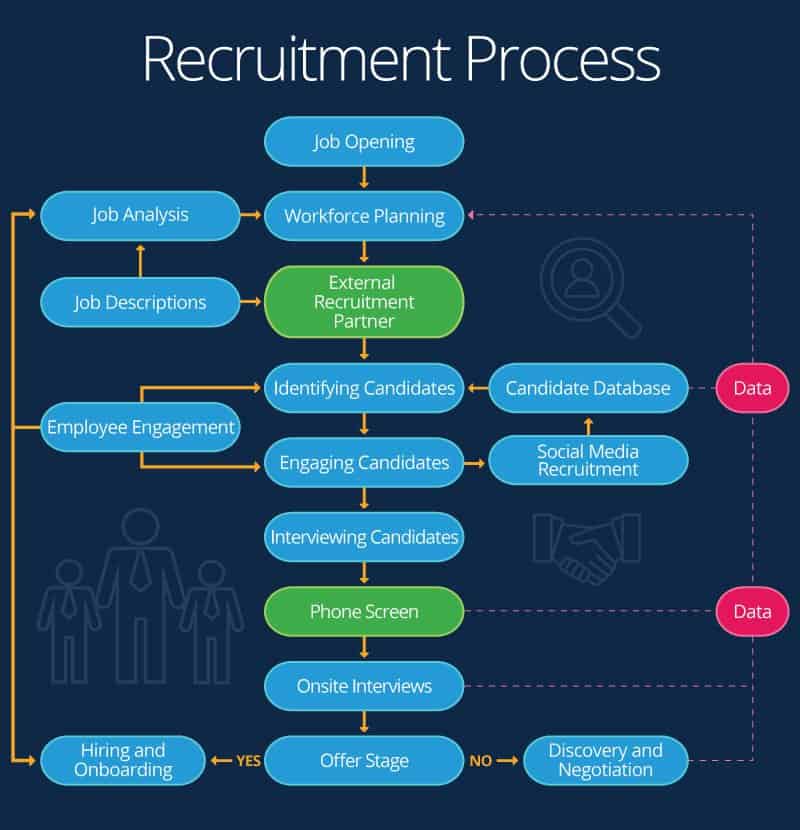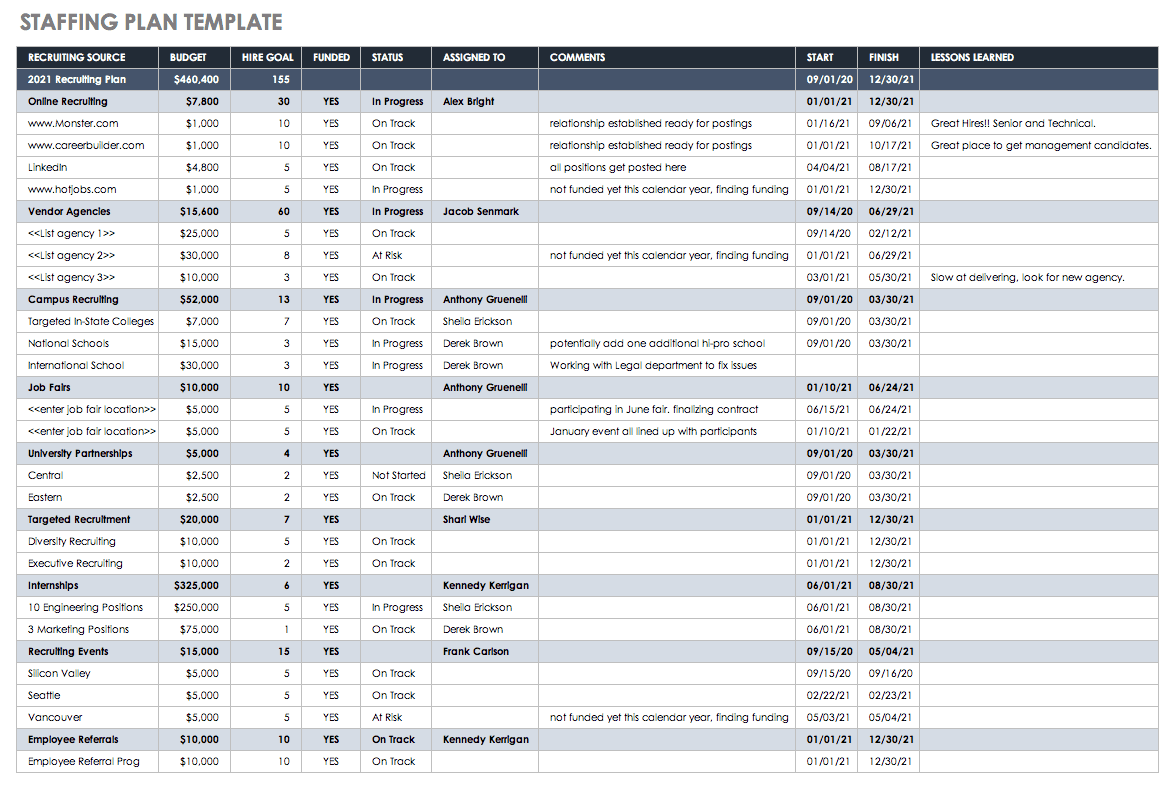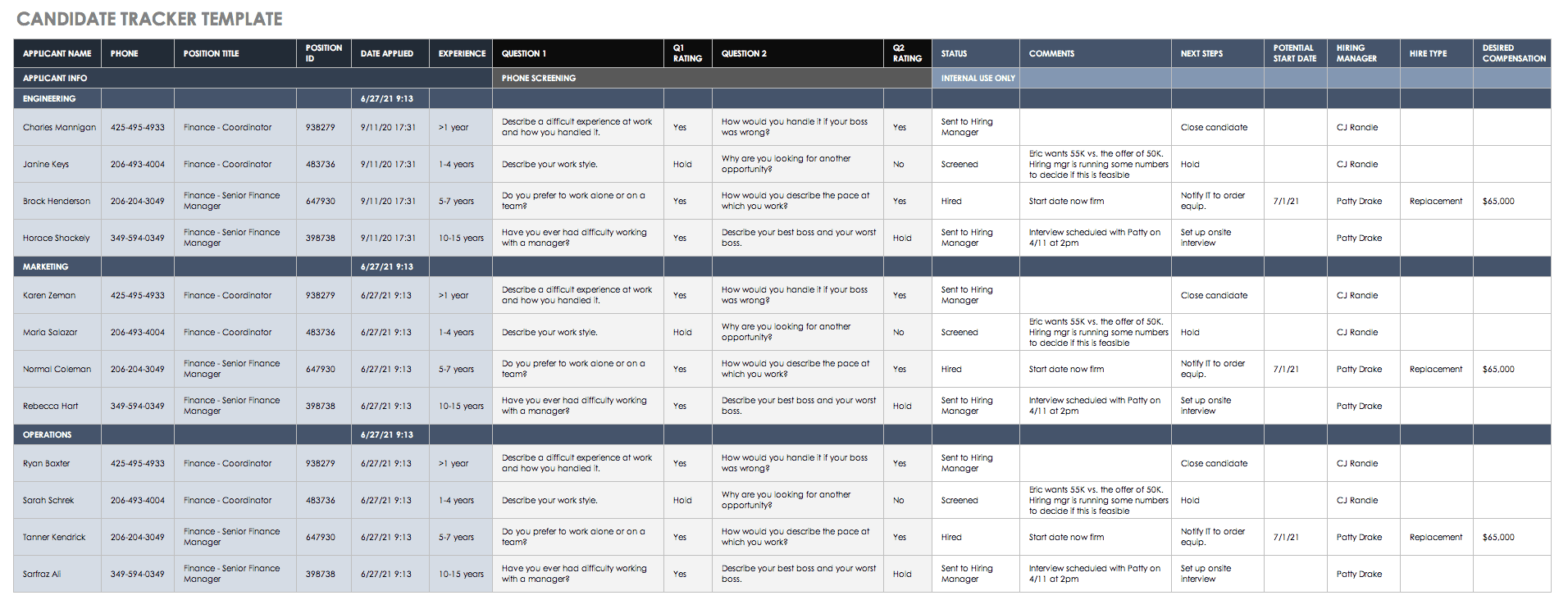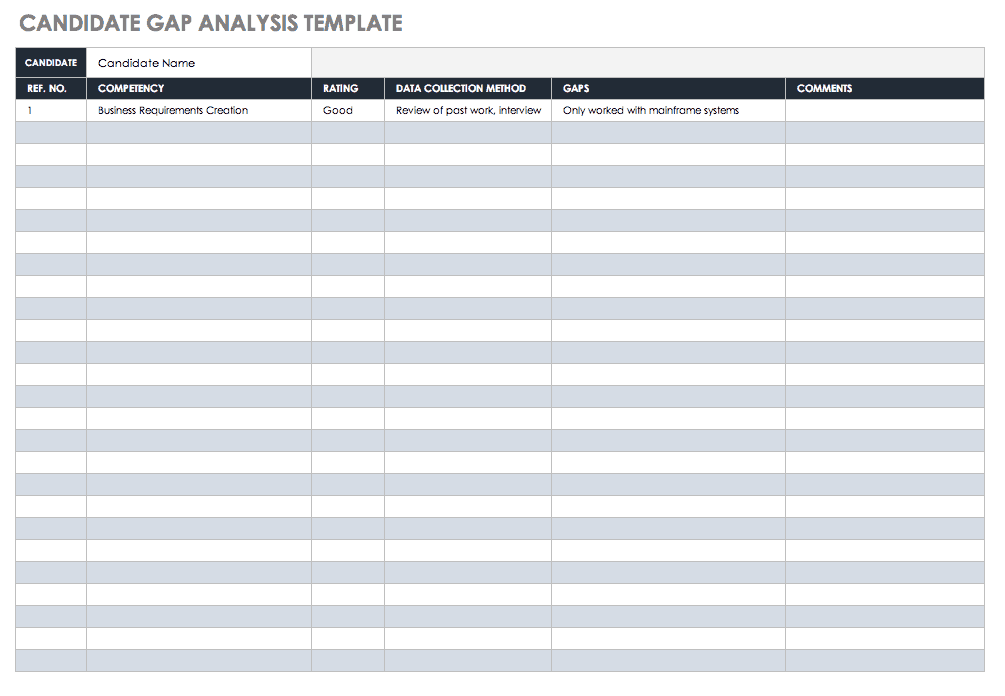What Is a Recruitment Strategy?
A clear recruiting strategy covers the who, what, when, where, why, and how required to align your business strategy, goals, and workplace culture to find and attract potential employees. Planning a recruitment strategy involves contributions from a variety of people, including recruiters, the hiring manager(s), executive leadership, and HR personnel.
Recruiting is not simply an activity to find people in time of need. It should be a component of your overall workforce planning – an opportunity to learn about how your company or business is perceived in the market – and a competitive strategy.
Koru provides a predictive hiring platform for recruiters to “efficiently screen and select high quality, diverse candidates” using machine learning, artificial intelligence, and a proprietary talent assessment science called the Koru7™ Impact Skills.
“Companies spend more money on human talent than they spend on anything else. Think about that. Salaries are the number one line item in our expenses. And we are stupid about how we hire,” says Hamilton. “We haven’t created an approach and a set of technology tools to help people to do that as best we can. We have all sorts of evidence, we have research, and we have knowledge, and we're still not leveraging that.”
Your recruiting strategy doesn’t have to devolve into a strength of resources and a marketing battle of the brands. However, a recruiting strategy is a business strategy: It requires you to define, measure, analyze, improve, and control. While focusing on building a brand, promotional marketing, creating clever job descriptions, and lowering the cost of finding and attracting new employees are not irrelevant strategies, ignoring new ideas and trends is detrimental.
What Is the Process of Recruitment?
The recruitment process refers to the activities used to find, engage, interview, hire, and retain employees. This process seeks to find qualified people for a job and varies based on the size of the company, the skills and qualifications required for the job, the industry, the environment, and more. The goal is to hire the right people to solve specific problems (or who are capable and motivated to learn how).
A recruitment process varies by employer and the expected job performance. For example, the method for recruiting temporary contract or freelance work involves identifying candidates who reflect the specific needs of that project. Recruiters and hiring managers, or any stakeholder involved in determining a person's employment opportunities, deal with the challenges of recruiting people. Some candidates are already gainfully employed and others are seeking employment – often in a vulnerable state and under pressure to impress and perform.
Your recruitment process mirrors the success and failure of your business. Business strategy requires planning and regular practices, and so does your recruiting process. When your recruitment process is ineffective and poorly designed, your business strategies are difficult to execute and may become symptomatic of a more significant problem: failure to find the right people for the job or an inability to attract them to your company. Consequences of an ineffective recruitment process include higher expenses, inferior workplace culture, and limited business growth.
To learn more about how experts and companies consistently ranked on the “best places to work” lists and use the recruitment process to create amazing places to work, read “Refine Your Recruitment Process to Attract the Best Talent.”
Recruiting Process Flowchart
Before deciding on specific recruiting strategies, map out your recruiting workflow to visualize the steps involved in the process. Use the recruiting process flowchart below to guide your recruiting strategy based on planning, finding, engaging, hiring, and retaining the right people.
What Are the Different Methods of Recruitment?
A recruiting strategy is only as strong as the time and resources dedicated to planning and implementing it. You can choose to go at it alone with your in-house team or hire an external recruitment partner to assist with every stage of the process. Here’s what you can expect from both options:
-
Internal Recruiting: A company develops a separate workforce plan to identify, engage, and attract an in-house team of recruiters. If you’re hiring for specific professions, like nursing or software development, target industry recruiters or train people with the necessary attributes to learn your recruitment process. The best way to get started is to use existing employees to identify candidates for the job using internal referrals. Your employees know what works at your company, the culture, and brand, and will recommend people that are a good fit. Having this kind of insight is especially important because an internal recruiter will know how to identify and find people with these traits as part of their strategy.
-
External Partners: There is an established industry of recruiting agencies, individual contract consultants, and solutions providers that partner with you to manage the recruitment process. The primary advantage to an external partnership isn’t removing yourself from the recruiting process. In fact, a sound recruiting strategy requires taking an active role in the search. The right partnership can increase the efficiency and effectiveness of your approach with new sourcing techniques, access to superior tools and technology, and experience managing the job offer stage and negotiating in competitive markets. Established recruiters attract active candidates, and they stay connected to a network of passive, highly qualified candidates.
Small Business Recruiting Strategy
The benefits of a sound recruiting strategy for your small business go beyond saving money on the high cost of employee turnover. Yes, hiring the right employees saves time and money in the long run. However, implementing a proactive recruiting strategy that fits your hiring process and attracts talented candidates is a competitive advantage. Your recruiting strategy directly impacts your employer brand or the way potential candidates view you.
Instead of going it alone and leveraging online tools like Dice, Indeed, and Monster first, and measuring your results later, take the time to create and document a recruiting policy. Share it with your managers and review it with your employees at the next all-hands meeting. Here’s a list of components and recommendations to consider when planning your recruiting strategy:
-
Referral Culture: Using employee recommendations to source candidates is a practical, proven strategy for finding a steady stream of qualified people. Ask your team who they know that would be a good fit for your company and culture, and clarify that this is an ongoing endeavor. Empower your managers to become the hiring authorities and encourage their participation in developing your strategy for sourcing and attracting talented people. Use hiring results and effective recruiting to review a manager’s performance. The goal is to create a pipeline of potential referrals and keep an active list of passive targets your employees and managers recommend. Plan for how you will execute and track paid candidate referrals. Offer a financial incentive for employee recommendations (consider a specific grace period to qualify and prevent abuse, for example, 90 days).
-
Seasonal Staffing: Small businesses that depend on strong holiday sales or dependable summer staff to handle large volumes of customers also require a proactive recruitment strategy. Analyze your seasonal staffing needs by reviewing your previous seasons. Where did you experience problems being understaffed or overstaffed? When did you ramp up hiring and when did you need to trim down staff for the offseason? Which seasonal hires, based on merit, performed the best in previous seasons? Can you target these specific candidate pools (for example, employees with previous experience in hospitality and food service may be better candidates)?
-
Candidates as Customers: Create a candidate-centric approach to your recruiting strategy and treat every potential employee in your recruitment process like you would a lifetime customer. This approach includes choosing the right methods for communicating your business’s brand to potential candidates. Your image on social platforms, your advertisements, and the press you receive all contribute to this strategy. Treat all candidates as if they were your best customer when you respond to emails, schedule interviews, and communicate the steps of the hiring process. Every candidate for employment, regardless of how far they make it in your recruiting process, should still want to do business with you or recommend your company after the recruitment process.
-
Social Content: Does your company have an up-to-date, professional Linkedin profile? Do you create and share content online that highlights your employees and culture? If your business is on Facebook and other social platforms, are you actively sharing your vision and progress to potentially passive candidates? You don’t have to have the Facebook advertising budget of a Fortune 500 company to leverage social media effectively in your recruiting strategy. Take every opportunity to advertise why your business is not only great for customers, but also a great place to work. Plan a content strategy and market your business’s brand to potential employment candidates and customers.
-
Measure and Manage: Small business budgets don’t have much room for experimenting with recruiting methods. Make sure your recruiting strategy has processes in place to measure and analyze what is and isn’t working. Study your best employees and use that information to source and target candidates. Experiment with different job descriptions on different platforms and consider working with an external partner to help you create compelling pitches that attract your target candidates. Partnering with an outside agency/external partner is more cost effective than building out an internal team of full-time recruiters. Track all of your recruiting expenses, including the fees you pay for online platforms to measure ROI. Maintain a database of all the candidates you interact with so you can reach out for future job opportunities and record the hiring source for all employees to spot trends.
A sound small business recruiting strategy requires planning and preparation. Successfully implementing this strategy and seeing results requires creating a culture of recruiting and leveraging all of your resources. Your approach begins with creating a workplace that attracts the right people and emphasizes a brand where talented people want to work. It is essential that potential candidates, and your existing employees, understand your business goals and the culture you created to make it all possible.
Download Free Recruiting Strategy Templates
Using a premade template can support your recruiting efforts by providing a structured, organized way to track information. In this section, you’ll find three free, downloadable templates to help you get started refining your recruiting strategy.
Staffing Plan Template
Recruitment is one of the top responsibilities of any human resources team. Searching for, vetting, and finding talented candidates to join your team is crucial to an organization’s success. Create a staffing plan to help plan your recruiting strategy, organize critical recruitment process flow data, and analyze metrics related to recruitment sources, workforce planning data, and more. This staffing plan template has columns for budgets, goals, status updates, and comments to organize your search efforts.
Download Staffing Plan Template – Excel
Candidate Tracker Template
Recruiting activity often involves tracking and managing a large volume of incoming resumes, cover letters, and applications, plus keeping the details of individual candidates organized and accessible. Depending on the size of the company, your workforce planning, and available resources, this information can be overwhelming. Use this candidate tracker template to help manage details and document critical information for candidates and hiring managers, including contact information, interview questions and answers, status, comments, next step updates, and more.
Download Candidate Tracker Template
Excel
| Smartsheet
Candidate Skills Gap Analysis Template
Recruiters and hiring managers can use this candidate gap analysis template to evaluate applicants’ skills. The template includes space to rate the applicant’s competency, note existing gaps, and add comments to keep communication flowing.
Recruiting Strategies Using Innovative Technology
Leveraging innovative web-based technology to screen, select, and develop talent is an open strategy for companies of all sizes and resources. Technology like predictive analytics, data science, machine learning, and automation software provide access to recruiting strategies built on innovative technology to gain a competitive edge.
In tech-driven employment (and the technology sector as a whole), the demand for specialized skills is growing, and the supply of a well-trained, skilled workforce lags behind. High tech industries and occupations (those with a high concentration of STEM jobs) are rapidly evolving as new technology transforms industries like telecommunications, healthcare, and manufacturing. As more professions require advanced computer-based skills (both developing and utilizing), the recruiting strategies for these jobs need updating as well.
Predictive Hiring Technology and Recruiting
Modern, global industry is tech-driven, but the use of buzzworthy tools and techniques involving automation and artificial intelligence lags behind practical implementation. That said, the potential for using data science and advanced computing to create scalable recruiting tools could redefine how talented, motivated people connect with employers and the methods employers use to attract them.
“There are different ways AI is being used, but an excellent concrete example is in predictive hiring. So in other words, it's around how do you predict people's performance, and how do you use predictive models? And it's probably the most realistic way of using AI in the hiring process today,” explains Koru’s Hamilton. “It’s fascinating – take that the same job, in the same industry, in the same city – the drivers of performance are different because culture and leadership and specific things about a company make it different. Now we see that in the data.”
According to Hamilton, if you aren’t using data and technology to optimize your recruiting and hiring process and developing models to “get smarter faster” about your recruiting strategy, you’re missing out on competitive advantages. “Your (recruiting) objectives might be around diversity, or around retention, or around performance, or around culture fit. All these things can be measured now. That's what's exciting with the assessment science and the competency models. If you don't do it, you'll be falling behind,” she adds.
Koru offers a free tool you can use to improve a critical component of the recruitment process: your job description. The Koru job description analyzer allows you to cut and paste your job description into the tool and receive an assessment of which of the Koru7 Impact Skills your job description is seeking. The tool analyzes the content of your current job description so you can realign the copy to attract candidates with the skills you value.
“We don't measure personality traits, because there is no connection between introversion and extroversion and performance on the job,” says Hamilton. “That's old thinking. The latest science rethinks predictive performance. We call them the Koru7, it’s the synthesis of a bunch of research done in the innovation economy environment.”
Hamilton describes how using AI to create predictive hiring models is an example of how technology prevents hiring bias and empowers diversity in the recruitment process. An effective recruiting strategy accounts for diverse variations in work experience, education, culture, and the differences in overall human competencies that the Koru7 assessment looks to identify and harness.
Recruiting Strategy for a Diverse Workforce
Applying facts and data-driven models can help you recruit talented people, and avoid the pitfalls of bias and guesswork. Using data science and advanced computing software to source, screen, and hire a diverse set of individuals with different skills and a variety of backgrounds is a sound recruiting strategy. In industries related to technology, where loyal, tenured employment is no longer the norm, and high-demand drives higher salaries. Utilizing this approach is a cost-saving strategy, and a competitive advantage.
“The best place to implement Koru is at the top of the funnel (hiring process) for two reasons: (you) consider every applicant and screen-in diversity, instead of screening it out. You want to consider every applicant because there are people who look bad on paper who will be high performers and people who look great on paper who will be low performers,” explains Hamilton.
She uses a typical scenario in the recruiting process to describe the limitations of using only intuition and personal experience when making hiring decisions.
“What people do after the resume-screening software screens for useless things, like GPA, where you went to college, and [if you’ve worked] with Facebook before, are not predictive,” explains Hamilton. “Then a human being looks at the resumes for an average of six seconds … and decides if we should interview the person, which is not working.”
“Today's traditional hiring approach is the definition of insanity,” says Hamilton. “If we spend an hour with someone, we spend the first four minutes deciding if we like them based on if they're like us. So basically it's like mini-me hiring. Then we spend the other 56 minutes confirming what we just decided – it's called confirmation bias. We have tons of evidence to tell us it doesn't work, but we keep doing the same thing over and over again, expecting some different result which will never happen.”
Mobile Recruiting Strategy
The widespread adoption of mobile technology as a recruiting strategy, including the use of mobile HR applications, email, and text messaging, is a growing trend. The expediency and convenience of mobile communication and automated SMS texting services makes networking with candidates a seemingly more personal and streamlined process.
A mobile recruiting strategy provides a unique opportunity for employers to brand themselves with a new generation that prefers digital interaction, and for whom the personal and professional networking divide starts online. A mobile-friendly recruiting strategy is candidate-friendly and can help build an employer’s brand while saving time and effort on back and forth communication. The ease and expediency of mobile messaging a candidate an update on their interview process, or the ability to engage with passive candidates using predominantly mobile media platforms like Instagram, gives employers a winning recruiting strategy.
Trumpia’s mobile SMS messaging and marketing automation software is capitalizing on the use of mobile tools and technology as a recruiting strategy.
“Two-way texting is the best way to collect essential documents and information from applicants in a timely manner,” says Jenny Hong, Manager of Operations (Accounting/HR) at Trumpia.
“Simply ask for information that needs to be submitted by a certain date, and allow candidates to text in the information when it’s convenient for them,” adds Hong. “With mass text messaging, you’re able to send announcements about new job openings to qualified candidates instantly, and 98 percent of those messages will be read (compared to email’s 22 percent).”
“You can use SMS messages to send automated reminders to individual job candidates before their interviews to reduce the chances of a no-show or quickly reschedule cancellations. You can schedule automatic reminders to guide applicants through every step of the process,” says Hong.
“We’ve moved to utilize text messaging as the first point of contact for candidates. It catches their attention, and we can gauge immediate interest and availability to filter out more passive candidates. Feedback from candidates shows that our texts help us stand out in the midst of an overloaded email or voicemail [box],” says Butler.
“We’ve implemented shorter, more direct messaging via our email outreach. Studies have shown that people are living more via mobile and scrolling quickly. As a result, we often have one opportunity to make an appealing connection and compel the candidate to respond right away,” Butler adds.
Social Media Recruiting Strategies
One of the top trends in recruiting is leveraging social platforms to connect and build professional relationships with potential employment candidates. Social media platforms reveal a candidate’s professional and personal interests. Digital networking opens the door for a steady, measured approach to finding and building professional relationships beyond a single cold call introduction.
“We’re noticing a trend with hiring managers that [look] for candidates engaged on social media … managers want us to send over Twitter, LinkedIn, and GitHub profiles. The candidates that show an interest in whatever technology they are working – like cyber security, Kubernetes, or blockchain – were naturally put at the top of the list,” explains Erickson.
The experts we polled invest time and resources in LinkedIn, which has more than 560 million members, as the preferred social recruiting strategy platform. Beyond the networking opportunities, it offers subscription services that empower users to use a data-driven approach to sourcing candidates, as well as an operational tool. Companies can incorporate strategies for replacing traditional job board subscriptions with LinkedIn’s platform to manage postings or leverage its accessibility by replacing the resume request on online applications with a LinkedIn profile URL.
“LinkedIn Recruiter builds upon the member database, allowing recruiters to search any profile’s data points while giving access to message any member [using the platform],” adds Benjamin. “For passive candidates, [this service] allows the opportunity to handpick a select audience and start a dialogue that, hopefully, will lead to a meaningful conversation surrounding a career change.”
Using social platforms like LinkedIn to streamline your recruiting process is a growth strategy. Social recruiting provides an opportunity to search and network with the ideal active and passive candidates using technology built to optimize the human interaction required to find and attract talented people.
Virtual Recruiting Strategy
Incorporating video into your online recruiting strategy (via social platforms and your website’s careers page) is an effective method for companies large and small to reach more candidates. It’s also an important part of a virtual recruitment process that leverages digital technology to create a competitive advantage. Conducting video interviews to screen recruits prior to hosting in-person interviews is a growing strategy. Technology like that available from HireVue, an AI-based video interviewing platform, uses facial and speech recognition software to analyze a candidate’s body language, voice, and stress levels.
“It’s an efficiency master tool, and there's a whole slew of video interviewing technologies,” says Hamilton of Koru. “On the recruiter side, let's say there are a bunch of people who are really busy people trying to decide, ‘When am I gonna interview candidates?’ You don't have to worry about their schedule. They get this docket of videos, they watch them at their leisure, they fast forward, they rewind. It's not rude. They listen to 10 minutes, and they're super clear that person's wrong, and they don't have to sit through half an hour more.”
Hosting live interviews with video conferencing software is a cost-effective way to arrange for group interaction. Recruits can engage with their hiring managers and peers without the constraints of travel, schedule conflicts, and the time required to host in-person interview rounds. Video technology is a useful tool for further along in the recruitment process, as well as during onboarding or when introducing recruits to your workplace culture.
“A recruiting video is technologically savvy and employee-focused,” he says. “By providing a recruiting video, [candidates] receive a genuine sense that people enjoy working at the company, can be themselves at work, and collaborate well with each other. They prefer to work for companies that embrace the latest technology and can set itself apart.”
Recruitment Strategies and Trends in 2018
The digital information age is playing host to a rapid shift in employment and economic opportunity. According to a Linkedin workforce report in June 2018, the supply of tech-driven employment opportunities in industries like engineering, financial services, software development, and oil and energy is rising in various U.S. cities. Demand for skilled employees in these boom-or-bust markets (for example, San Francisco, Houston, and Seattle) is creating a competitive recruiting market as companies battle it out for qualified people. Being aware of the recruiting trends created by this shift is the first step for businesses competing for talented people that need effective recruiting strategies.
The following list is a summary of topics and trends from conversations with recruiting professionals, including ideas for how you can apply recruitment strategies to find and attract different types of skilled employees in competitive markets.
Trend #1: Mobile Marketing Recruiting
In general, millennials and Gen Z workers are more comfortable using their mobile phones to search for, apply, and communicate about job opportunities in the passing moments between their current job or other activities. This generation of workers is expected to make up the majority of the global workforce by 2025. Account for this candidate pool, and their preferences for a mobile recruiting experience, with inbound mobile marketing activities. Consider implementing a mobile campaign localized using social advertising with Google, Facebook, and text messaging. SMS messaging software like Trumpia provides a platform and support to engage candidates at all phases of the recruitment process via mobile communication.
Example: Volunteer Recruitment Strategy: According to a recent survey, people in the U.S., on average, check their phones 47 times and spend three to four hours on mobile devices each day. Volunteer candidates, especially millennials (active and passive), do more than shop and seek entertainment via mobile browsers. Develop an employer brand with mobile marketing campaigns that resonate with the communication style of your target candidate market. Highlight the candidate experience, as well as your workplace culture, via content designed for mobile-friendly engagement. Aligning mobile marketing and recruiting creates a passive talent pool of engaged candidates that, with the right effort and recruitment process, enter your talent pipeline at the same stages of your customer funnel.
Trend #2: Social Recruiting
Social media platforms are evolving into relationship management tools for recruiters and employers, and are becoming a preferred communication tool to find and attract target candidates. Access to a candidate’s Linkedin, Twitter, or Facebook profile means recruiters and employers don’t have to overvalue the resume. Now, insight into culture fit and access to conversational topics open doors to engage with candidates online proactively, before posting a job description or receiving an application. Sophisticated advertising tools and search algorithms designed to target specific demographics, personal and professional interests, and more means employers can buy keywords specific to their jobs and the candidates they want to attract.
Example: Nurse Recruitment Strategy: Nursing recruiting is an active, thriving practice due to unpredictable fluctuations in the supply of qualified nurses and the demand for their services. One strategy for addressing supply and demand is to build a robust pipeline of potential candidates for employment (active and passive) that you can access immediately. Use social platforms like Linkedin and Facebook to engage with candidates and build relationships as the recruiter or employer. Start a Facebook group and invite current and former recruits and employees to participate in topics relevant to nurses and their families, share information about jobs and healthcare employers, and network. Analyze and track social data — for example, use geolocation engagement on Facebook ads and group member locations for candidate searches. Use the information to guide your messaging and create candidate profiles for future keyword searches to find new passive recruits.
Trend #3: Recruiting AI and Automation
Technology is an integral part of the modern recruitment process. By introducing data science, machine learning, and technologies such as predictive analytics (or people analytics), you can cast a broader, more accurate net to find the right people. Software designed with AI and automation tools benefit the entire hiring process. These tools streamline the resume review process with automation functions that create a more efficient candidate search and lead to a more diverse candidate pool by removing inherent confirmation bias.
Example: Diversity Recruitment Strategy: Software designed with AI, automation, and predictive data science is revolutionizing modern HR and diverse workplace initiatives. These tools change every aspect of the recruitment process by aiding the human effort involved in finding, attracting, and interacting with people. Using tools like predictive analytics to measure, recognize, and reward diversity in the workplace promotes a workforce full of differing experiences, educational background, age, ethnicity, culture, and more. Using HR metrics provided by this technology, as well as data-driven analysis, you can determine top performer traits with more accuracy, remove confirmation bias, and discover the diverse backgrounds of potential recruits before your competition finds them. Use the information to develop precise keyword searches to find candidates online. This data will help you develop competitive compensation and incentive plans as well, and help you attract a diverse range of candidates.
Trend #4: Live Recruiting Events
Open your workplace to candidates using live recruiting events. Events are any meetings with potential candidates via live, face-to-face interactions – not just the booth you set up every year at the college job fair. Software (like that available from HireVue or video conferencing platforms like Zoom) allows you to host frequent live events with candidates using live screening interviews. The interview is a significant first impression for candidates and employers, and as a live, face-to-face event, it provides the opportunity to remove the ambiguity of a phone interview.
Example: College Recruitment Strategy: Colleges host a variety of career-building and networking events, including college job fairs where employers are asked to participate and actively recruit students. Use your presence at these events to answer questions about the problems you’re solving. Ask co-workers, not just recruiters and HR, to show up and participate so candidates can interact with different teams. Host live recruiting events onsite at your business and join meetups hosted around local college campuses focused on your industry and your business interests (for example, tech meetups).
Improve Your Recruiting Strategy with Smartsheet for Human Resources
Empower your people to go above and beyond with a flexible platform designed to match the needs of your team — and adapt as those needs change.
The Smartsheet platform makes it easy to plan, capture, manage, and report on work from anywhere, helping your team be more effective and get more done. Report on key metrics and get real-time visibility into work as it happens with roll-up reports, dashboards, and automated workflows built to keep your team connected and informed.
When teams have clarity into the work getting done, there’s no telling how much more they can accomplish in the same amount of time. Try Smartsheet for free, today.








